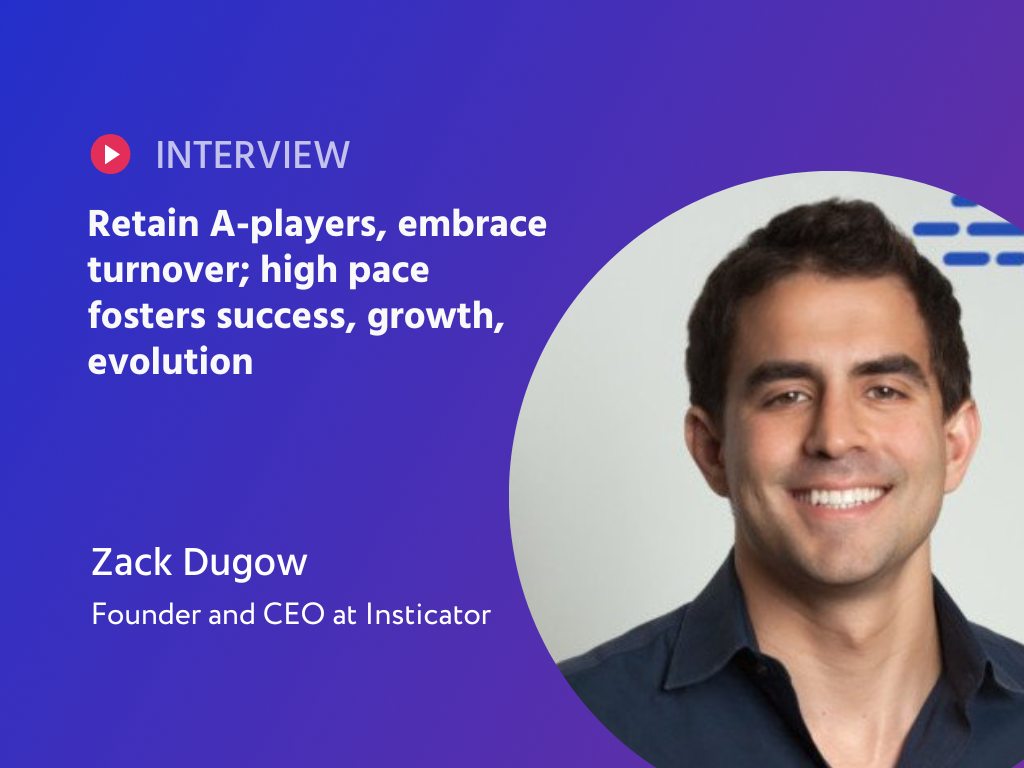According to Statista, the digital health market is projected to reach $171.90 billion by the end of 2024. The same data indicates that the revenue per user is currently around $129.20. This makes healthcare web development one of the most profitable services for IT companies worldwide.
As all industries are moving toward digitalization, healthcare web app development is also promoting this trend. The new possibilities allow patients to book appointments, access medical records, consult doctors via telemedicine, get prescription reminders, and a dozen other features that improve life.Temy’s team has been working with HealthTech for 10+ years, providing clients from all around the world with high-quality digital solutions. Read on to find out about the web development future trends in healthcare and best practices based on our team’s experience.
Why Does Your Company Need Web Development for Healthcare?
Remember the COVID-19 pandemic? Millions of patients struggled to book an appointment with their doctors, as hospitals were overwhelmed and didn’t provide telemedicine at the time. Web development for healthcare is what brought solutions to these issues to life.
Today’s patients can already:
- Schedule appointments;
- Access medical records;
- Consult with doctors;
- Receive medication reminders;
- Track health data;
- Pay medical bills;
- Request prescription refills, and so much more.
This isn’t just a one-sided benefit. Apart from getting a high-quality experience and service for your patients, you also simplify the life of your doctors. Healthcare website development helps doctors:
- Access patient records;
- Monitor patient health;
- Send E-prescriptions;
- Review test results;
- Manage billing and insurance claims;
- Track patient compliance, etc.
The United States alone made over 2.5 billion e-prescriptions in 2023 using the country’s largest e-prescribing operator. However, such software isn’t always beneficial for your needs. Medical web development allows you to get a custom solution with no subscription fees, feature limitations, and more.
Healthcare Web Development Trends
While the healthcare web application development area covers multiple trends, some of them are more prominent during the 2024-2025 season. Let’s check out what to focus on in your future app.
Automation of Administrative Processes
Automation of administrative tasks is a growing trend in medical website development. Healthcare websites make it easier for staff to schedule appointments, pay bills, and keep track of patients' information. This results in fewer errors and faster service delivery. Patients can use automated systems to handle tasks like scheduling appointments or paying bills online. This convenience enhances the overall patient experience by decreasing wait times and improving service access.
Patient-doctor Communication
Improved communication between patients and doctors is a major focus for healthcare web apps. Patients can easily contact their healthcare providers using secure messaging, video consultations, and notifications. This trend allows doctors and patients to get timely follow-ups and consultations. It also offers convenience, as patients can consult doctors from home for minor issues.
Clinical Decisions Support
Clinical decision support tools are becoming major components of healthcare platforms. These tools help doctors by providing real-time recommendations and alerts on treatment options, potential drug interactions, and critical patient data. Embedding these systems allows healthcare providers to ensure that doctors have up-to-date medical insights at their fingertips. This improves decision-making and leads to better patient treatment results.
Patient Education
Patient education is becoming more popular among physicians as it’s a way to influence their patients’ lifestyles and behaviors. Modern websites now offer access to personalized health information, treatment plans, and wellness tips tailored to each patient’s condition. This trend empowers patients to take charge of their health by providing reliable information. Educated patients are more likely to follow treatments and make conscious decisions about their care.
Simplicity of the Navigation Menu
For healthcare websites, it is crucial to have a simple and intuitive navigation menu. Patients and doctors need to find important information quickly, without confusion or frustration. Also, an efficient and well-organized menu structure enhances the user experience. It ensures that users can book appointments, view records, or find health information in a matter of clicks, potentially saving someone’s life.
Data Visualization
Healthcare websites and apps are using data visualization tools to show complex information in a simple & interactive way. Charts, graphs, and dashboards make patient data easy to understand. These tools help both patients and doctors track health metrics over time, making trends clear. Visualization improves the doctor’s choice of treatment and helps patients know their progress and treatment results.
Healthcare Web App or Website Accessibility
Websites and apps must be usable by all, including people with disabilities. Features like screen reader compatibility and keyboard navigation ensure a higher degree of inclusivity. Healthcare platforms make services accessible to everyone by meeting the Web Content Accessibility Guidelines. This ensures that patients with various disabilities can access and manage their health information easily.
Healthcare Web Development Guidelines
1. Define the Purpose and User Needs
Although it may seem obvious, the first step in healthcare web development is identifying the platform’s purpose and target audience. Understand what patients and healthcare providers need. These could be booking appointments, finding medicine in their location, and other features.
You’re also part of the target audience, but you’ll still have to:
- Interview doctors;
- Interview patients.
This will help you get an objective view of people’s needs and outline clear user journeys for the application. If the platform solves at least one pain point from real life, it’s already a win.
2. Focus on Security and Compliance
Security is important for healthcare web development because patient data is very sensitive. It obliges you to comply with healthcare regulations like HIPAA or GDPR. You’ll have to implement high-quality encryption methods, secure authentication protocols, and data storage approaches.
Some key elements to consider are:
- Data encryption;
- 2FA;
- RBAC;
- Regular audits;
- Compliance documentation.
Maintaining security is not a one-time task. It requires ongoing monitoring and updates to meet changing standards and avoid legal penalties. Better safe than sorry!
3. Make a User-Friendly Design
Although you hear about user-friendly and intuitive designs everywhere, in healthcare apps this is especially important. It could save people in a life or death situation by allowing them to find all the necessary information on allergies, prescriptions, and others in a matter of seconds.
Your healthcare website design must include:
- Clear navigation;
- Mobile responsiveness;
- Fast loading times;
- Accessible interface;
- Personalized dashboards.
Temy’s UI/UX designers can help you ensure your website and application have everything to provide the best experience that doesn’t frustrate users. It’s the best choice if you want designers & developers with experience in the healthcare industry.
4. Implement Advanced Search and Navigation
If you’re looking for healthcare-related information online, you know the frustration when you always get irrelevant results. This is an industry where time is essential, so users must be able to find all records, appointments, and articles in a matter of clicks.
Your search functionality should typically include:
- Filters by date, type of service, condition, or provider;
- Autocomplete and suggestions;
- Quick links and shortcuts;
- Integrated engines like Elasticsearch.
Both patients and healthcare providers will benefit significantly from having these features.
5. Incorporate Telemedicine and Communication Tools
Telemedicine allows doctors to provide remote consultations and follow-ups. It’s especially important when working with patients who are far away or in critical conditions with need of immediate assistance.
If you want to stay on top of the trend, here’s what you should integrate:
- Video consultations;
- Secure messaging;
- Notifications and alerts;
- File sharing.
Telemedicine tools allow healthcare providers to help more patients, especially in remote areas. This also gives patients more flexibility in how they receive care.
6. Use Data Visualization for Better Understanding
As a healthcare web development company, we know the amount of complex data used in hospitals. Health metrics, treatment outcomes, analysis results – all these may be confusing in simple numbers. That’s why it’s necessary to present information in a clear visual format for everyone to understand.
In HealthTech, we typically use:
- Interactive dashboards;
- Charts and graphs;
- Color coding;
- Comparative analysis.
These techniques and approaches allow us to simplify the information for patients and doctors, helping them get a quicker grasp of the information available.
Key Features of a Healthcare Web App
The healthcare web development process includes brainstorming for all must-have and nice-to-have features for your software. However, there are certain key features that are essential to meet user expectations and industry standards. These include all the following options in this sheet.
| Feature | Description | Approximate Cost |
|---|---|---|
| User Authentication | Secure login systems with multifactor authentication ensure that only authorized users can access personal health information. | $5,000 |
| Patient Profile Management | Patients can create and manage their profiles, including medical history, insurance details, and personal data. | $10,000 |
| Appointment Scheduling | Allows patients to book, reschedule, and cancel appointments with healthcare providers through an intuitive interface. | $8,000 |
| Telemedicine Capabilities | Integrated video conferencing for virtual consultations between doctors and patients, improving access to care. | $15,000 |
| Secure Messaging | Enables encrypted communication between patients and healthcare providers, facilitating follow-ups and questions. | $5,000 |
| Health Records Access | Patients and providers can view and manage electronic health records, including lab results and prescriptions. | $20,000 |
| Prescription Management | Allows doctors to issue e-prescriptions and enables patients to request prescription refills online. | $10,000 |
| Payment Processing | Integrated payment gateways for easy billing, allowing patients to pay for services or consultations directly through the app. | $5,000 |
| Health Monitoring | Integration with wearable devices or manual input for tracking vital signs, chronic conditions, and other health metrics. | $15,000 |
| Compliance and Security | Ensures compliance with healthcare regulations such as HIPAA or GDPR, including secure data handling, encryption, and auditing features. | $12,000 |
| Appointment Reminders and Alerts | Push notifications and email reminders to keep patients informed about upcoming appointments, test results, or medication schedules. | $5,000 |
While this may seem like a lot of features, there are still many others that can and should be included in your healthcare solution. However, this list builds up all the key elements that can help you turn the app & website into a functional product. The costs indicated near each feature are industry estimates for the US market based on our team’s experience and research. If you’re calculating the cost of healthcare website development, contact Temy’s experts to get a detailed estimate based on your request.
Temy’s Experience in Healthcare Website Development
Temy is your tech partner for creating high-quality healthcare websites of any complexity. Our designers and engineers have been working on similar solutions since 2013, providing feature-rich and intuitive solutions under NDAs for global clients. Overall, we completed over 100 successful projects across different industries. You can check out our case studies here.
Partnering with Temy’s team means getting a secure, scalable, and user-friendly healthcare solution with all must-have and nice-to-have features. We also know the industry’s regulations, so you won’t have to worry about compliance. Our expertise includes integrating EHR systems, building scheduling systems, designing interfaces, and many other services.
Conclusion
If your healthcare organization decided to create a custom solution, it’s the right choice. Tailored websites and applications are the best way to get a high-quality product that works as intended in your industry. However, you’ll have to partner with a reliable team to bring this idea to life. That’s where Temy comes to the scene – your reliable team for healthcare development.
FAQ
You must typically implement strong encryption (both at rest and in transit), multifactor authentication, role-based access control, and compliance with HIPAA and GDPR. This will allow you to maintain maximum security.
Key features of a healthcare web app include user authentication, appointment scheduling, telemedicine capabilities, secure messaging, access to electronic health records or EHRs, and compliance with security standards.
Everything depends on the features you request. Temy’s team can provide a detailed estimate for your idea after our primary consultation. Get in touch with our experts to get a quote!

Discover More Captivating Success Stories:

Unveiling the Future: Ingo Ruebe’s Journey from Open-Source Pioneer to Digital Identity Architect
Ingo Ruebe Unleashed: Navigating Tech Frontiers from Open Source to

Guiding Fast Slow Motion to New Heights: The Leadership of John Burdett
John Burdett's Masterclass: Navigating Growth and Leadership at Fast Slow

Jeremias Unlocks Web 3.0: Universal Registry, Cross-Platform Names, and Entrepreneurial



